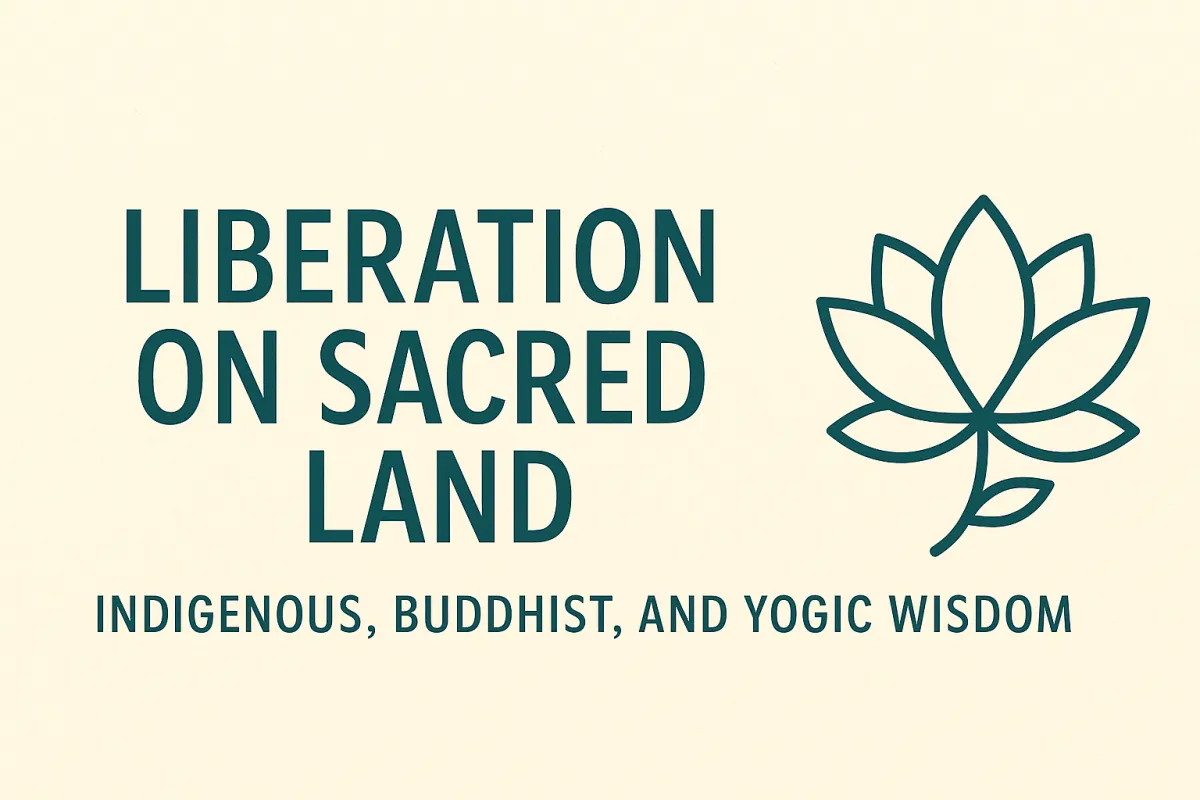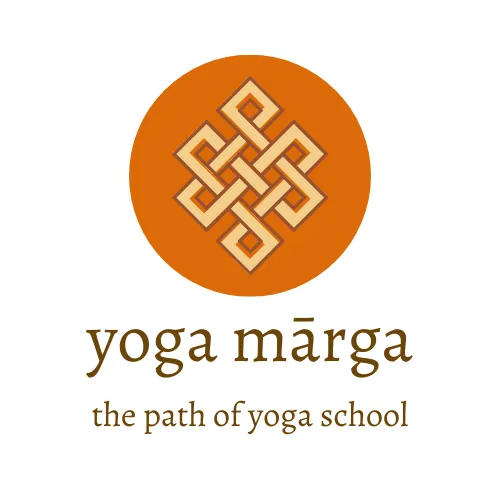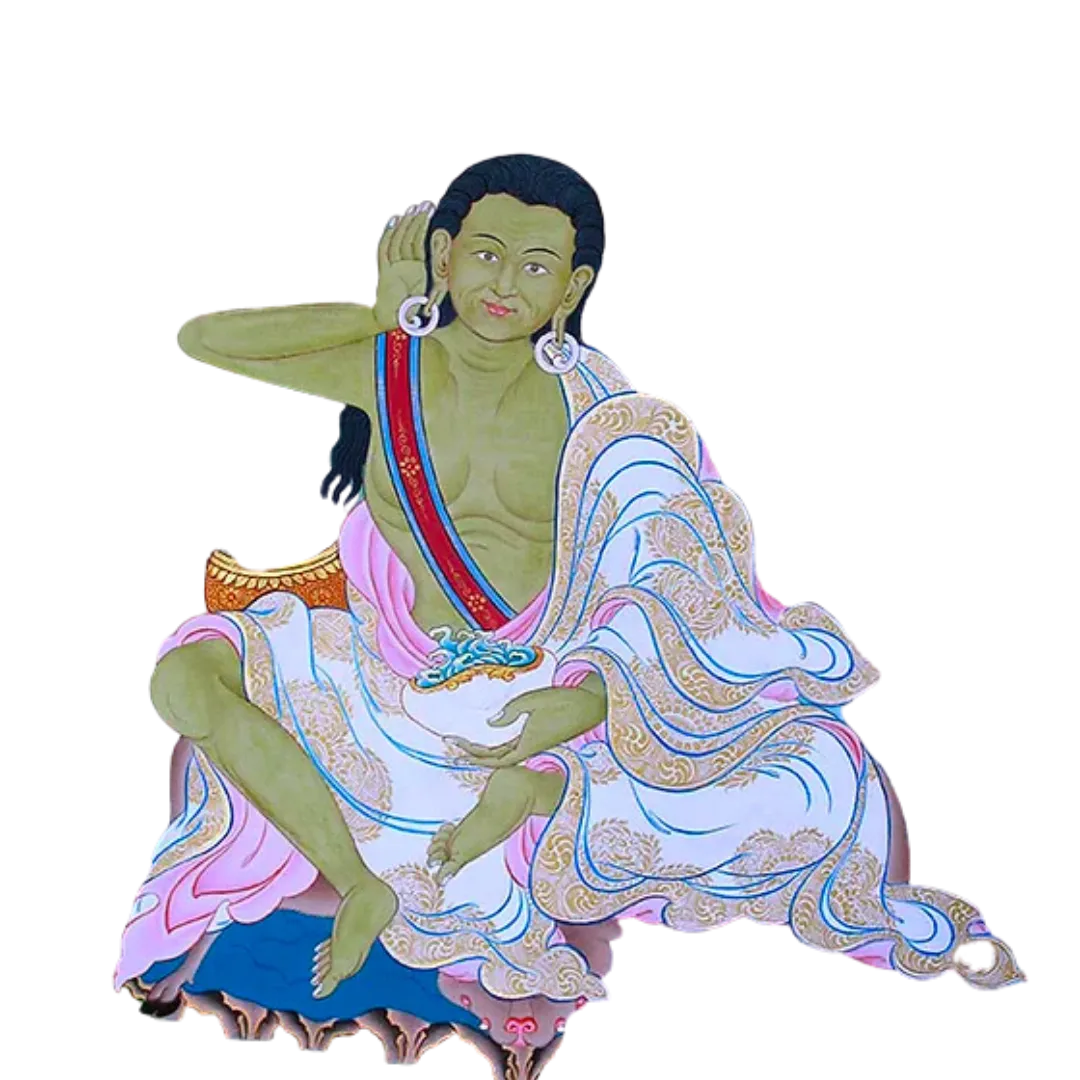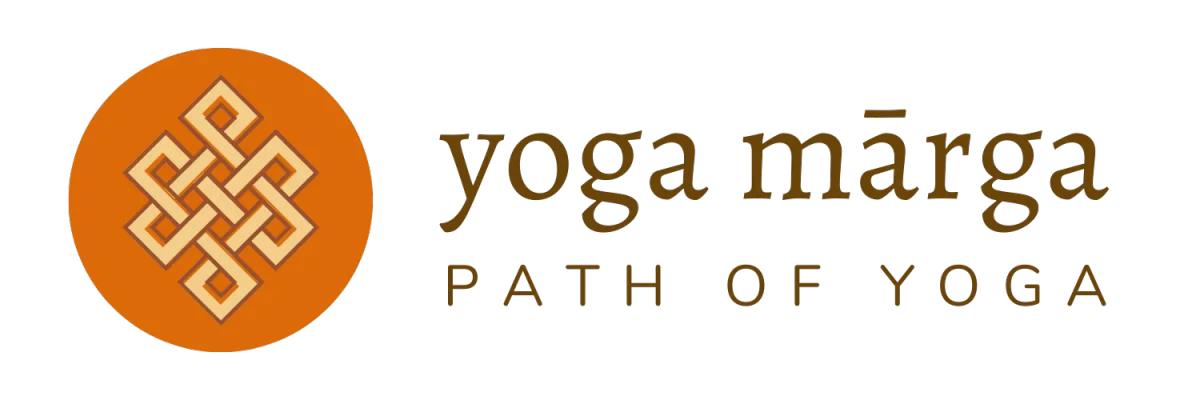Yoga Mārga Blog
Weekly Resources for Yoga Instructors, Wellness Professionals, and Healers.

Liberation on Sacred Land: Indigenous, Buddhist, and Yogic Wisdom for Inner and Outer Freedom
On July 4th, 1776, the Declaration of Independence proclaimed that "all men are created equal" and endowed with "unalienable Rights" to "Life, Liberty and the pursuit of Happiness." Yet this revolutionary document was penned by those who simultaneously upheld systems of slavery and committed genocide against Indigenous peoples—the original stewards of this land. This historical contradiction illuminates a crucial question that echoes through the ages: What does true freedom actually mean?
Before exploring ancient wisdom traditions, we must acknowledge that every place in America has a deeper history. The land beneath our feet was home to thriving Indigenous nations for thousands of years before colonization. Native Land Digital honors the sovereignty of all Indigenous nations, their lands, and their waters, reminding us that true liberation must begin with recognizing whose land we occupy. To learn about the original inhabitants of your area, visit Native-land.ca (https://native-land.ca), an Indigenous-led resource that maps traditional territories, languages, and treaties worldwide.
The ancient traditions of yoga and Buddhism offer profound insights into this question, pointing beyond political liberation to something deeper—freedom from the very roots of human suffering and bondage. Their teachings reveal that authentic liberation must encompass both inner transformation and outer justice, both personal awakening and collective healing.
Indigenous Wisdom and the Foundations of Liberation
Indigenous peoples across the Americas developed profound spiritual understandings over thousands of years on this continent, with sophisticated systems documented well before European contact. These teachings, preserved through oral tradition and lived practice, recognize that true freedom cannot exist without honoring our responsibilities to the earth and all living beings.
The Lakota concept of Mitákuye Oyás'iŋ ("all my relations") reflects a deep understanding of interconnectedness—that we are connected to all life. The Haudenosaunee (Iroquois) principle of Seven Generation thinking requires considering the impact of decisions on seven generations into the future, demonstrating wisdom that extends far beyond individual concerns. The Medicine Wheel traditions found across many Indigenous nations represent integrated understandings of balance, relationship, and spiritual development.
These Indigenous spiritual frameworks were thriving on this continent for centuries before Buddhism or yoga philosophy arrived in the Americas in the 20th century. While we cannot pinpoint exactly when specific teachings originated, the complexity and depth of these systems reveal sophisticated understandings of liberation, interconnectedness, and sacred relationship developed through millennia of lived experience on this land.
Indigenous land acknowledgment is itself a spiritual practice. As Native Land Digital teaches: "We hope to strengthen the spiritual bonds that people have with the land, its people, and its meaning." This recognition that land is sacred, not property to be owned, challenges the very foundations of systems built on extraction and exploitation.
The forced removal of Indigenous peoples from their ancestral lands represents one of history's greatest spiritual crimes—the severing of sacred relationships between people and place. As the Native Governance Center explains: "Land acknowledgments do not exist in a past tense, or historical context: colonialism is a current ongoing process."
The Buddhist Vision of Liberation
Buddhism places liberation (nirvana) at the very heart of its teaching. The Buddha's first sermon after his enlightenment declares: "This is the Noble Truth of the cessation of suffering: it is the complete fading-away and cessation of this very craving, its forsaking and abandonment, liberation from it, non-attachment to it."
Understanding Nirvana
In Buddhist understanding, liberation transcends conditioned existence entirely. The Dhammapada opens with the Buddha's words: "All conditioned things are impermanent. When one sees this with wisdom, one turns away from suffering. This is the path of purification."
The great master Nagarjuna taught that liberation comes through understanding emptiness (sunyata): "Neither from itself nor from another, nor from both, nor without a cause, does anything whatever, anywhere arise." This insight into interdependence dissolves the illusion of separate selfhood that binds us to suffering.
The Path to Freedom
The Buddha outlined the Eightfold Path as the systematic way to liberation, encompassing ethical conduct, mental cultivation, and wisdom. This path leads practitioners through progressive stages of understanding until they achieve complete freedom from suffering.
The contemporary Vietnamese master Thich Nhat Hanh beautifully expresses this process: "Thanks to impermanence, everything is possible. Life itself is possible. If a grain of corn is not impermanent, it can never be transformed into a stalk of corn."
The Yogic Understanding of Liberation
Classical yoga, systematized by Patanjali, defines liberation as kaivalya—the complete recognition of one's true nature as pure consciousness (purusha), distinct from the material world (prakriti).
The Nature of Yogic Freedom
The Yoga Sutras begin with Patanjali's definition: "Yoga is the cessation of fluctuations of the mind." When mental fluctuations cease, "then the Seer abides in Its own nature." This is yogic liberation—the recognition and establishment in our essential nature as pure awareness.
The Bhagavad Gita presents this through Krishna's teaching: "When a person gives up all varieties of desire for sense gratification, which arise from mental concoction, and when his mind, thus purified, finds satisfaction in the self alone, then he is said to be in pure transcendental consciousness."
The 8th-century master Adi Shankara taught: "Brahman is the only truth, the world is appearance, and there is ultimately no difference between Brahman and individual self." This non-dualistic understanding reveals liberation as recognizing our fundamental unity with ultimate reality.
The Systematic Path
Patanjali's eight-limbed path provides a comprehensive approach to liberation, beginning with ethical guidelines and culminating in the highest states of meditative absorption where practitioner, practice, and object of meditation merge into one.
The 20th-century sage Ramana Maharshi pointed to the same truth through self-inquiry: "Your own Self-realization is the greatest service you can render the world." He taught that liberation comes through asking "Who am I?" until we recognize our true nature as pure awareness.
Where Inner and Outer Liberation Meet
Both traditions recognize that personal and collective liberation are inseparable. This insight becomes crucial when we examine how spiritual teachings apply to social justice and systemic oppression.
The Interdependence of All Freedom
The Buddhist concept of interdependence reveals that individual suffering and collective suffering are intimately connected. We cannot be truly free while others remain in bondage. The Bodhisattva vow makes this explicit: "Beings are numberless, I vow to save them all."
Dr. Martin Luther King Jr., deeply influenced by Eastern philosophy, demonstrated this integration: "Injustice anywhere is a threat to justice everywhere. We are caught in an inescapable network of mutuality, tied in a single garment of destiny."
The contemporary teacher Reverend angel Kyodo williams, a Black Buddhist teacher, writes: "The fact that we are all interdependent is not a feel-good notion. It means that what happens to some of us is happening to all of us. When we really understand this, we can't help but act."
Systems of Oppression Through a Spiritual Lens
Both traditions recognize that ignorance and attachment create suffering not only individually but systemically. The Buddha taught about collective karma and how societies perpetuate cycles of harm.
The Buddhist teacher David Loy observes: "The three poisons of greed, ill will, and delusion have become institutionalized in our economic system, military-industrial complex, and mass media." This analysis shows how personal afflictions manifest as systemic oppression.
Similarly, the yogic concept of maya (illusion) applies to social conditioning. When we see others as separate from ourselves, we enable systems that dehumanize and oppress.
The Engaged Path: Spiritual Practice as Social Action
Authentic spiritual practice is inherently revolutionary. Both Buddhist and yogic teachings challenge the foundations of systems based on greed, hatred, and delusion.
Historical Examples of Engaged Liberation
Throughout documented history, spiritual practitioners have applied liberation teachings to social transformation while drawing from multiple wisdom traditions:
Indigenous Rights Movements: Native activists and organizations like the American Indian Movement (AIM) have combined traditional spiritual practices with direct action for sovereignty and land rights, maintaining ancestral teachings while resisting oppression
Gandhi's Satyagraha: Combined yogic principles of ahimsa (non-violence) with direct action against colonialism, also drawing inspiration from Indigenous concepts of earth-based resistance
The Dalai Lama's Approach: Maintains compassion while advocating for Tibetan freedom, recognizing parallels with Indigenous peoples' struggles for cultural survival
Thich Nhat Hanh's Engaged Buddhism: Developed during the Vietnam War, combining meditation with peace activism and recognition of war's impact on the land and its original inhabitants
Contemporary Integration: Teachers like bell hooks integrate Buddhist mindfulness with anti-racism work, while Indigenous practitioners like Lorain Fox Davis bridge Native American and Tibetan spiritual traditions, showing how different liberation paths can complement each other
Avoiding Spiritual Bypassing
The danger lies in using spiritual concepts to avoid confronting systemic injustice. As the Buddhist teacher Ruth King observes: "Spiritual bypassing is when we use spiritual concepts to avoid dealing with painful feelings, unresolved wounds, and unmet developmental needs."
True spiritual practice requires facing difficult truths about society and ourselves. The phrase "we are all one" becomes a tool of oppression when it dismisses the real experiences of marginalized communities.
The Revolutionary Nature of Practice
When understood correctly, both traditions are inherently transformative. The Buddhist teacher bell hooks addresses this directly: "Sometimes people try to destroy you, precisely because they recognize your power. But even in the face of hatred, we can choose love."
The contemporary teacher Tara Brach connects this to social justice work: "The boundary to what we can accept is the boundary to our freedom. When we can hold the pain of the world with compassion, we become agents of healing."
Practical Integration: Freedom Day by Day
True liberation requires daily practice that integrates inner development with outer engagement. This means bringing mindfulness to social action and understanding social justice as spiritual practice.
Daily Practices for Integrated Liberation
Mindful Awareness: Examine our own biases and conditioning through self-inquiry while staying present to social realities
Compassionate Action: Use privilege to amplify marginalized voices while maintaining humility about our own limitations
Nonviolent Resistance: Practice ahimsa in thought, word, and deed while actively opposing systems of oppression
Conscious Consumption: Make choices that don't perpetuate exploitation while recognizing the interconnectedness of all life
Deep Listening: Truly hear experiences different from our own while maintaining our commitment to justice
The Ultimate Teaching
The deepest insight of both traditions is that liberation is both personal and collective. As the contemporary teacher Lama Rod Owens writes: "We cannot heal what we cannot feel. We cannot feel what we will not acknowledge. We cannot acknowledge what we do not understand."
The Indian activist Vandana Shiva, influenced by yogic philosophy, demonstrates this integration: "We are either going to have a future where women lead the way to make peace with the Earth or we are not going to have a human future at all."
A Call to Complete Freedom
As we celebrate political freedom on July 4th and throughout the year, we must acknowledge that liberation remains incomplete while systems of oppression persist. True celebration of freedom requires acknowledging that this land's original inhabitants—whose sophisticated governmental systems influenced the Constitution itself—were systematically displaced and their wisdom traditions suppressed.
The spiritual path calls us not to escape the world but to transform it through the marriage of wisdom and compassion, understanding and action. This includes recognizing that the land we call home has its own history of liberation movements, its own spiritual traditions, and its own teachers who understood freedom in relationship to the sacred.
Take Action Beyond Acknowledgment:
Visit Native-land.ca to learn whose traditional territory you live on
Support Indigenous-led organizations and causes in your area
Learn from Indigenous teachers and wisdom traditions that developed on this continent
Understand how colonization continues to impact Native communities today
Advocate for Indigenous rights, land sovereignty, and environmental protection
The Buddha taught: "Better than a thousand hollow words is one word that brings peace." The Upanishads declare: "Tat tvam asi"—"That thou art"—pointing to our inherent freedom. Indigenous teachings remind us that this freedom is inseparable from our relationship to the land and all our relations.
Spiritual traditions across cultures promise that liberation is not something we must create but something we must uncover—the eternal freedom that has always been our true nature. This freedom calls us to create a world where all beings, including the original stewards of this land, can recognize and embody this same liberation.
The path remains open to all who are willing to undertake the journey of self-discovery while working for collective transformation. Whether through Buddhist compassion, yogic union, or Indigenous teachings about sacred relationship, the destination is the same: the recognition and embodiment of our inherent freedom in service of all life.
True liberation means freedom from suffering for ourselves and all beings—including healing the wounds of colonization and honoring the wisdom of those whose spiritual understanding developed through centuries of lived relationship with this sacred land. This July 4th and every day, we can choose to make this ancient promise a living reality for all people.
Sources and References
Primary Texts and Scriptures
Dhammacakkappavattana Sutta (The Buddha's First Sermon)
Dhammapada (Buddhist collection of sayings)
Udana (Buddhist scripture collection)
Yoga Sutras of Patanjali
Bhagavad Gita
Upanishads
Vinaya Pitaka (Buddhist monastic rules)
Contemporary Teachers and Authors
Thich Nhat Hanh. The Heart of Understanding: Commentaries on the Prajnaparamita Heart Sutra
bell hooks. All About Love: New Visions
Reverend angel Kyodo williams. Radical Dharma: Talking Race, Love, and Liberation
Ruth King. Mindful of Race: Transforming Racism from the Inside Out
Pema Chödrön. When Things Fall Apart: Heart Advice for Difficult Times
Tara Brach. Radical Acceptance: Embracing Your Life With the Heart of a Buddha
Lama Rod Owens. Love and Rage: The Path of Liberation through Anger
David Loy. Money, Sex, War, Karma: Notes for a Buddhist Revolution
Adyashanti. The Way of Liberation
Historical Figures
Dr. Martin Luther King Jr. "Letter from Birmingham Jail"
Adi Shankara. Vivekachudamani (Crest Jewel of Discrimination)
Ramana Maharshi. Who Am I? (Nan Yar?)
Nagarjuna. Mulamadhyamakakarika (Root Verses on the Middle Way)
Indigenous Wisdom and Resources
Native Land Digital. "About." https://native-land.ca
Native Governance Center. "A Guide to Indigenous Land Acknowledgment." https://nativegov.org/news/a-guide-to-indigenous-land-acknowledgment/
Lorain Fox Davis. Quoted in "Indigenous Dharma: Native American and Buddhist Voices." Inquiring Mind, 2019.
Vandana Shiva. Staying Alive: Women, Ecology and Development
Academic and Educational Sources
Northwestern University. "Land Acknowledgment: Native American and Indigenous Initiatives." https://www.northwestern.edu/native-american-and-indigenous-peoples/about/Land%20Acknowledgement.html
National Environmental Education Foundation. "A Guide to Indigenous Land Acknowledgment." https://www.neefusa.org/guide-indigenous-land-acknowledgment
Cultures of Belonging. "Medicine Wheel Teachings." https://empoweringthespirit.ca/cultures-of-belonging/
Additional Resources for Readers
To find whose traditional territory you live on: Native-land.ca (https://native-land.ca)
For Indigenous land acknowledgment guidance: Native Governance Center (https://nativegov.org)
SMS tool for land acknowledgment: Text your zip code to (907) 312-5085
Alternative mapping resource: Whose.land (https://www.whose.land)
Note: This article draws from oral traditions, written teachings, and contemporary scholarship. Readers are encouraged to explore these sources directly and engage with Indigenous communities in their areas to deepen their understanding.

Los Angeles, CA
Tampa Bay, FL
Between two thoughts,
there is Buddha.
- Milarepa
Milarepa (1052-1135 AD), a Tibetan yogi and poet, was a man who turned the trajectory of his life from misdeed to enlightenment, reminding us of the enduring potential of the human spirit.

